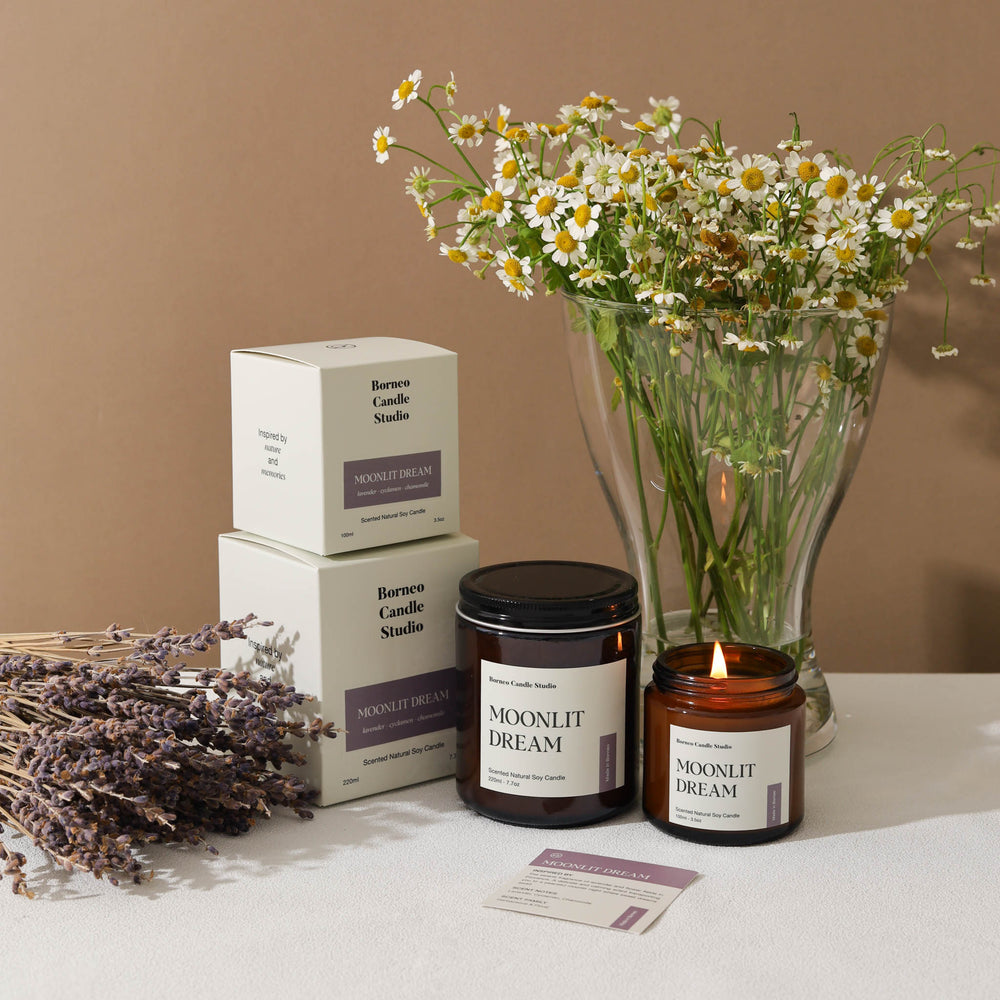Welcome to our comprehensive guide on scented candles! Whether you're a seasoned candle aficionado or just starting your journey into the world of scents, understanding the differences between various candle types is essential.
Today, we'll delve into the details of the commonly found scented candles in our region which are soy wax candles, paraffin candles and beeswax candles; comparing their benefits and drawbacks to help you make an informed choice.
Soy Wax Candles
What are soy candles made of?
Soy candles are made from soy wax which are extracted from soybean oil. As it is made from a renewable and biodegradable resource, soy candles are eco-friendly.
What are the benefits of soy candles?
One major benefit of soy wax candle is its longer burn time; it burns slower and at a lower temperature, resulting in up to 50% longer-lasting candle. This efficiency also contributes to a better scent throw, as the lower melting point of soy wax allows it to hold and release fragrance oils more effectively, offering a stronger and more consistent scent experience.
Unlike paraffin candles, soy candles burn cleaner producing little to no soot, which significantly improves indoor air quality and reduces the risk of staining walls and furniture.
What are the drawbacks of soy candles?
However, there are a couple of drawbacks. Soy candles are more expensive than paraffin candles due to the cost of soybean oil and the production process. Additionally, soy wax may sometimes develop a white, frosted appearance on the surface. This frosting is purely cosmetic and doesn't affect the candle's performance, but some users might find it less aesthetically pleasing.
Beeswax Candles
What are beeswax candles?
Beeswax candles are another natural option, as beeswax is a byproduct of honey production. They are known for burning cleanly with little to no soot, similar to soy candles.
What are the benefits of beeswax candles?
Beeswax candles also have a long burn time and produces a natural, subtle honey scent that can be quite pleasant even without added fragrances. Additionally, beeswax candles are noted for their ability to purify the air by releasing negative ions that bind with toxins and help remove them, although scientific evidence to confirm this is limited.
What are the disadvantages of beeswax candles?
Despite these benefits, beeswax candles tend to be the most expensive due to the labor-intensive process of collecting and refining the wax. They are also better suited as unscented candles that allow the natural oil scent to be released into the air. The high melting point and natural composition of beeswax mean it is not as effective as soy wax at releasing added fragrances.
Paraffin Wax Candles
What is paraffin candle?
Paraffin candles are made from paraffin wax (a petroleum byproduct) and is the most widely used wax in mass produced candles, spanning across luxury and budget-friendly brands.
What are the benefits of paraffin candles?
Paraffin wax is very versatile, it holds colour well and can be easily moulded into different shape and sizes, offering more options.
Another benefit of paraffin wax is its affordability. As a byproduct of crude-oil production, paraffin wax is cheaper to produce and widely available.
What are the cons of paraffin candles?
However, paraffin candles produce soot when burned, which can contribute to indoor air pollution and may leave black residue on walls and surfaces. According to a study in 2009, paraffin candles were found to release potentially carcinogenic toxic chemicals when burned. They also tend to burn faster and at a higher temperature, leading to a shorter lifespan for the candle.
Choosing The Right Candle For You
Each type of candle wax has its own unique advantages. Soy wax stands out for its clean burn, longer burn time, and excellent scent throw, making it a great choice for those who prioritize air quality and fragrance longevity. Beeswax offers natural benefits and a long burn time, ideal for those who enjoy a subtle honey scent and are willing to invest a bit more. Paraffin candles provide affordability and versatility in shapes and colours, suitable for a wide range of uses and budgets.
By understanding the strengths and limitations of each type of wax, you can make an informed choice that best suited scented candle your needs and preferences.
We hope the insights from our blog help you to make an informed decision when purchasing your next candle. Feel free to reach out directly to us if you have any questions!

